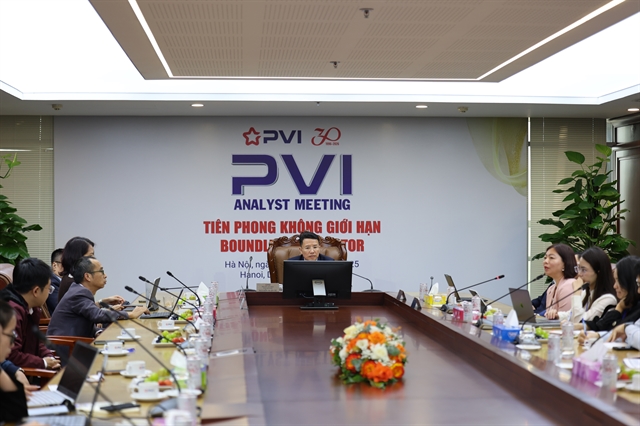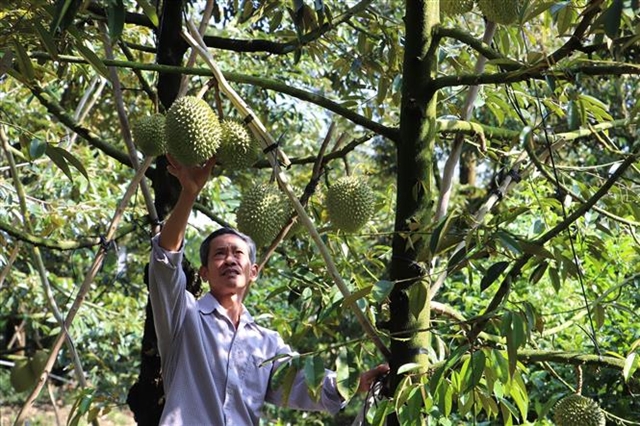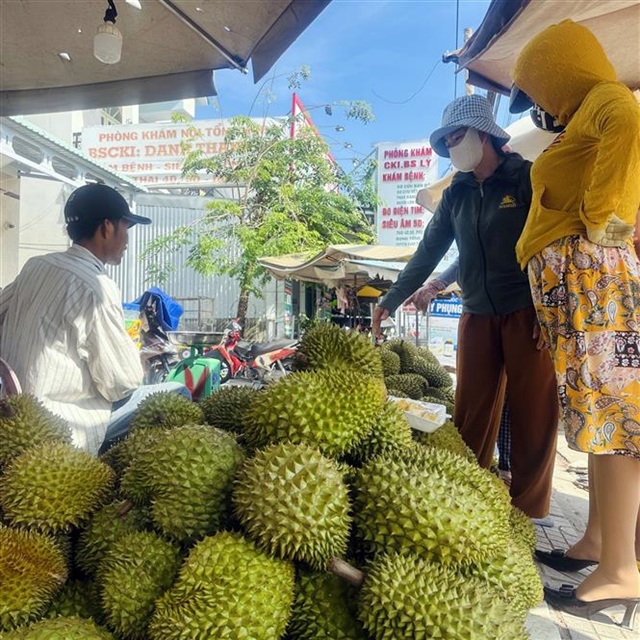 Economy
Economy


|
| A farmer inspects durians at his farm in Tiền Giang Province. — VNA/VNS Photo |
HÀ NỘI — China has approved an additional 829 planting area codes and 131 packaging facility codes for Vietnamese durian, according to the Plant Protection Department under the Ministry of Agriculture and Environment.
This follows the submission of dossiers for 1,604 planting areas and 314 packaging facilities to the General Administration of Customs of China (GACC).
With the new approvals, Việt Nam now has a total of 1,469 planting areas and 188 packaging facilities eligible to export durian to China. Authorities have urged localities and businesses to seize this opportunity while ensuring strict compliance with China’s plant quarantine and food safety regulations for sustainable market access.
The Plant Protection Department reported that Việt Nam currently has 12 laboratories certified to test for cadmium and eight for auramine O, two substances under close scrutiny by Chinese regulators.
Since the signing of the bilateral durian export protocol, over 90 per cent of Việt Nam’s durian output has been exported to China. However, the Chinese market poses challenges due to its unpredictability and frequent changes in import regulations.
Chinese traders also play a major role in Việt Nam’s durian value chain, from purchasing to distribution.
They said that China maintains high and rising technical standards, especially in food safety. Some Vietnamese enterprises and producers focus only on obtaining codes for planting areas and packaging facilities without ensuring continuous compliance with the protocol's requirements. Code trading and falsification remain issues, making it difficult to trace origins and control quality.
Unlike other fruits such as mango, dragon fruit and lychee, China requires all durian planting areas and packaging facilities in Việt Nam to undergo direct or online inspections before approving export codes.
According to Tô Vạn Quang, vice chairman of the Việt Nam–China Business Association in Guangxi, durian exports to China have seen explosive growth. In 2023, exports surged to approximately US$2.2 billion, up from $188 million in 2022, capturing 31.8 per cent of China’s durian market. At peak times, Vietnamese durian accounted for 57 per cent of China’s imports.
He attributed this growth to Việt Nam’s geographical advantages, such as short transport distances and year-round harvests. However, he emphasised that maintaining this success requires strict adherence to the technical processes agreed upon in the export protocol.
Tightening technical requirements
While Việt Nam now exports fresh and frozen durian to over 20 markets, China remains the dominant destination. However, the Chinese market’s volatility, coupled with high technical requirements, presents ongoing difficulties for Vietnamese exporters.
Authorities warn that some producers have harvested under-ripe or immature fruit to chase profits, resulting in subpar durians that have drawn complaints from Chinese buyers. Such practices harm the product’s reputation and the national brand.

|
| Durians for sales by a street vendor in Rạch Giá, Kiên Giang. — VNA/VNS Photo Lê Sen |
To address these issues, the ministry proposes amendments to Article 64 of the Law on Crop Production to establish a legal basis for regulating planting area and packaging facility codes. Once revised, the law will be followed by a decree to guide the issuance, management, and enforcement of code regulations.
Việt Nam is also working to diversify its durian export markets. Ongoing trade promotion efforts target potential markets such as the United States, Canada, the United Kingdom, Australia, Hong Kong (China), Japan, Taiwan (China), the UAE, the Netherlands, France and Russia.
In response to China tightening controls over cadmium and auramine O content in imported durians, the Plant Protection Department has stepped up monitoring of agricultural inputs. It is working with market authorities to inspect and penalise the sale of substandard inputs.
The ministry promotes a linked supply chain model involving farmers, input suppliers, and exporters to improve transparency and accountability. This model enables full traceability from production to packaging and export.
Samples are tested at each stage, from the farm and packaging facility to the final inspection before loading into containers. At border checkpoints, further sampling is conducted as required by quarantine authorities.
On Saturday, the ministry and the Đắk Lắk Province People's Committee will co-host a national conference on sustainable durian development. The hybrid conference will feature updates on production, market access, consumption and food safety systems related to durian exports. — VNS




.jpg)